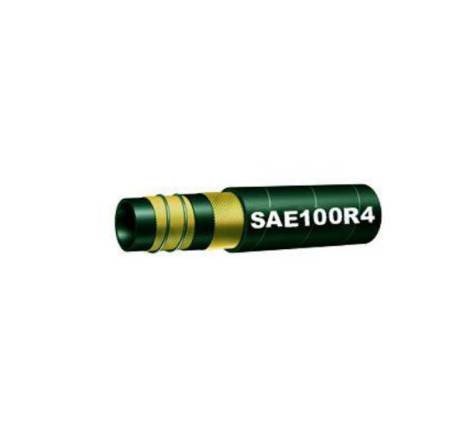There are thousands of reasons for hydraulic hose failure, but with proper precautions, the most common failures can be avoided. The following are the 8 most common reasons for hose failures shared by Hydraulic Hose Suppliers.
Corrosion of hydraulic hoses often leads to external leakage. Corrosion of the inner rubber layer is usually caused by concentrated high-speed fluid or by fine particles in the fluid.
In order to avoid corrosion of the inner rubber layer, determine the appropriate hose size according to the recommended maximum flow rate. In addition, it should be ensured that the hose assembly does not produce excessively tight bends, and that the fluid medium does not cause excessive abrasion of the inner rubber layer of the hose. During the hose assembly process, it is very important to comply with the maximum bending radius and diameter requirements specified in each hose engineering specification.
Incompatible fluids will cause deterioration, swelling and delamination of the inner rubber layer of the hose assembly. In some cases, the inner rubber layer may also be partially destroyed. The hose must be compatible with the fluid being transferred. Make sure that the fluid is not only compatible with the inner rubber layer, but also with the outer rubber layer, joints and even O-rings.
The inner rubber layer of the hose may have many tiny cracks due to old or dry air. Sometimes, this type of failure is difficult to find because the hose can still remain flexible, but there will be signs of external leakage.
To avoid dry or stale air problems, you should verify that your hose rating is suitable for extremely dry air. For these applications, it is best to choose a hose with EPDM inner rubber material. If possible, the dew point of the air should be increased.

Hydraulic Hose
If the minimum bend radius is not met, the hose assembly may fail relatively quickly.
In vacuum or suction applications, if the bending radius is exceeded, the hose may become flat in the bending area. This will hinder or restrict the flow of media. If the bend is too severe, the hose may become kinked. In order to prevent malfunction of the minimum bending radius hose, the recommended bending radius should be carefully checked.
When the hose assembly is not properly crimped, it may cause a very dangerous situation. The connector must be pushed completely onto the hose in order to meet the recommended insertion depth requirements. The grip of the last lap on the connector housing is very important for the strength of the hose.
In order to find the appropriate insertion depth, Jerry has developed a precise production process, which will ensure that the hose is pushed to the position that meets the correct insertion specifications.
For Hydraulic Hose assemblies, contamination can cause various problems. When cutting the hose, metal particles and debris may be deposited in the hose if it is not properly flushed. The abrasive left in the hose will contaminate the hydraulic system. In addition, it may also cause small cracks in the inner tube of the hose assembly, which can lead to leakage.
To prevent hose failure due to contamination, the hose must be properly cleaned before being inserted into the joint. Before inserting the connector, the inner tube should be "very clean". After the assembly is crimped, make sure to install the dust cap to keep the hose clean and avoid secondary pollution during transportation.
Overheating of the hose assembly can also cause hose failure. Overheating will cause the hose to become very hard. The inner hose will harden and begin to crack because the plasticizer in the elastomer will begin to decompose or harden at high temperatures. In some cases, the cover layer may show signs of excessive drying. After the hose assembly is removed, it may retain the shape it was installed in. If it is bent, a cracking sound will be heard.
In order to prevent the hydraulic hose assembly from overheating, it should be confirmed that the rated temperature of the hose meets the temperature requirements of the application. In addition, lowering the ambient temperature or using protective covers and shields will protect the hose from nearby high-temperature areas.
Hydraulic hoses need to go through harsh environments every day, and the effects will eventually show up on the hoses. If the inspection is not performed regularly, wear and tear may cause the hose assembly to rupture and leak. If the hose is excessively rubbed against an external object or even another hose, the coating layer on the hose will be worn away and eventually the strengthening layer will be worn away.
A correctly assembled and installed hose will have a longer life, thereby reducing downtime and maintenance costs. Our company also provides Metal Hoses, please feel free to contact us if necessary.
Copyright © Hengshui Huiya New-Mat Technology Co., Ltd. All Rights Reserved Sitemap
